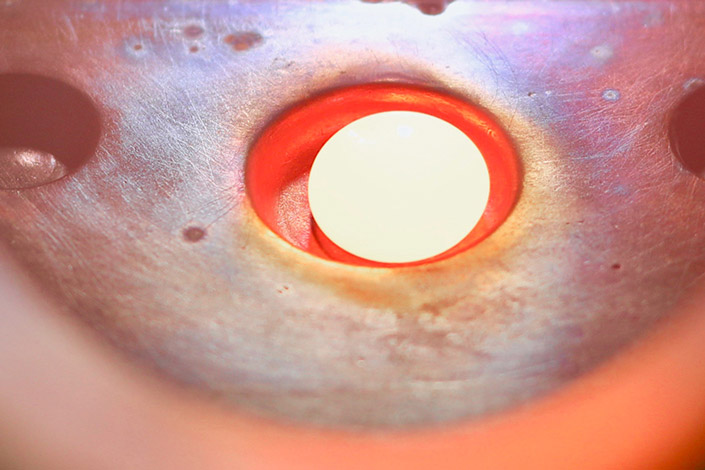New smart materials could open new research field

A flame heats up NiTiHf HTSMAs inside a vacuum arc melter during fabrication of the material.
Image: Dharmesh Patel
A group of new smart materials discovered by researchers at Texas A&M University and their colleagues has the potential to significantly improve the efficiency of fuel burn in jet engines, cutting the cost of flying. The materials, which could also reduce airplane noise over residential areas, have additional applications in a variety of other industries.
“What excites me is that we have just scratched the surface of something new that could not only open a completely new field of scientific research, but also enable new technologies,” said Ibrahim Karaman, Chevron Professor I and head, Department of Materials Science and Engineering.
The work was published in Scripta Materialia. Karaman’s co-authors are Demircan Canadinc, William Trehern, and Ji Ma of Texas A&M, and Fanping Sun and Zaffir Chaudhry, Technical Fellow of the United Technologies Research Center (UTRC).
The discovery is based on bringing together two relatively new areas of materials science involving metal alloys, or metals composed of two or more elements. The first area involves shape-memory alloys, “smart” materials that can switch from one shape to another with specific triggers, in this case temperature. Picture a straight metal rod that is bent into a corkscrew. By changing the temperature, the corkscrew turns back into a rod and vice versa.

